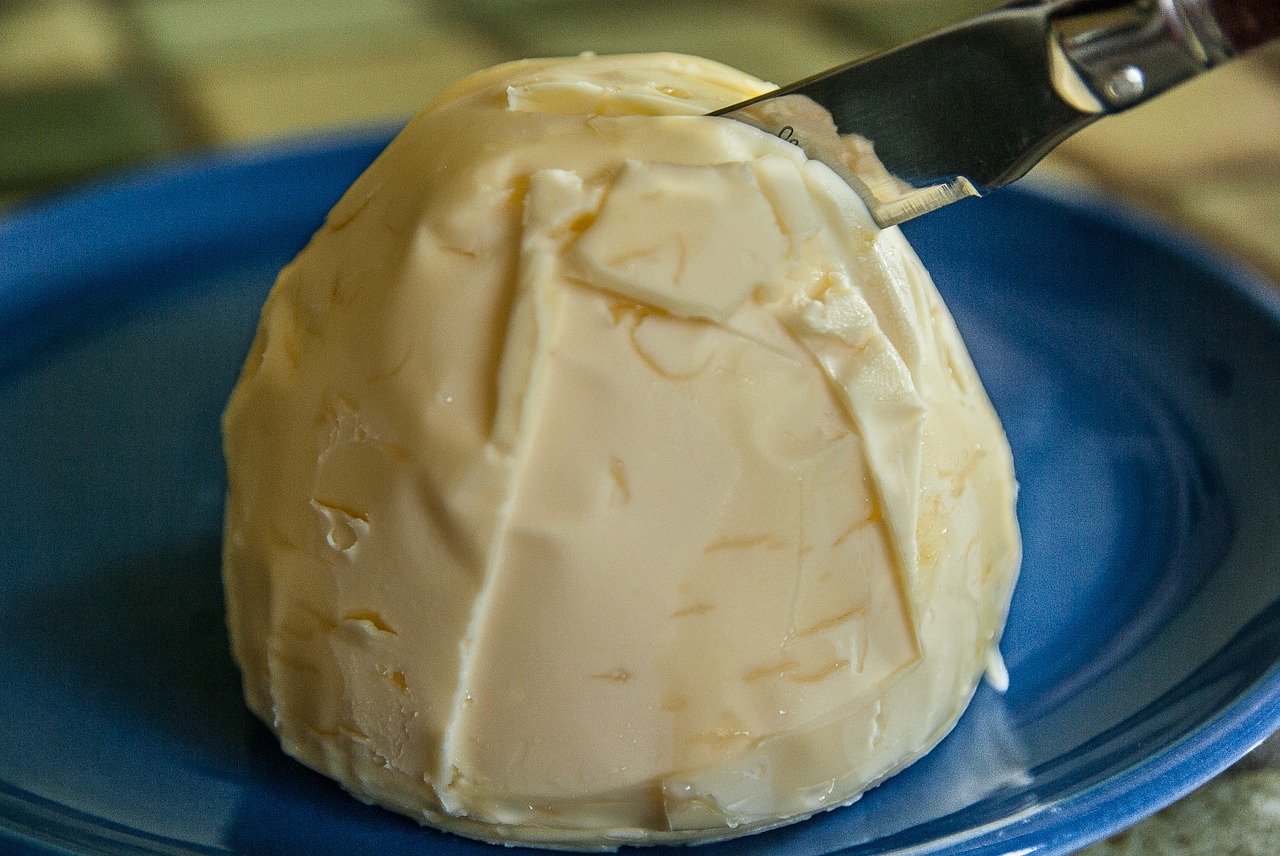Let’s check it out.
It’s no secret that butter has emerged as the winner between these two in recent years – this is mostly due to the whole, eating natural lifestyle that people have been adapting to. Indeed, butter is more natural than margarine; margarine isn’t even really yellow.
The definitions of butter versus margarine:
- Butter: The fatty part of milk, separating as a soft. . .yellowish solid when milk or cream is agitated or churned.
- Margarine: A butterlike product made of refined vegetable oils, sometimes blended with animal fats, and emulsified, usually with water or milk.
The main difference between the two is that butter is derived from animal fat, while margarine comes from vegetable fat. FitDay.com explains that butter is made from cream that rises to the top of milk; margarine is created from vegetable oil that has been extracted chemically and then refined – I think it’s that word “chemically” that shies people away from butter’s doppelganger.
Nutritionally, butter and margarine have the same calories, according to TruthOrFiciton.com, that is, 100 per 1 tbsp. Butter has more saturated fat, but it also contains vitamins: A, D, E, and K, none of which are found in margarine. Furthermore, although margarine has been marketed as an ideal substitute for butter because it has less saturated fat (only 2 grams per tablespoon compared to butter’s 7), some margarines have more trans fat, which is worse for the heart than saturated. The more solid margarine is at room temperature, the more trans fat it holds.
The most frightening unnatural aspect of margarine is that it contains nickel, as well as other toxic chemicals if consumed in large amounts. FitDay.com says that if nickel is eaten in excess, it could yield to kidney disease or lung cancer, among other conditions. Yikes.
Better Homes and Gardens believes that butter and margarine (and shortening) are different types of fats and you simply need to consider the one that is best for you – and, the one that is best for whatever you’re cooking.
As implied before, there are several different kinds of margarines, and so you really do need to read the labels to take into consideration its health and additional effects when compared to butter. As BHG puts it, “Margarines vary a lot in the types of oils used. . .Those that contain higher amounts of fats are best for baking, as those with less fat will contain more water and will cause tougher baked products. Flavor varies with margarines too.”
HowStuffWorks.com maintains that the National Association of Margarine Manufacturers say margarines with at least a 60% oil content are the most suitable for use in baking. However, even some margarines cannot replace butter in certain baked goods, like puff pastries.
In conclusion, butter is more nutritious than margarine for the most part, but margarines differ nutritionally; not all margarines taste the same, either. If you are substituting margarine for butter for health reasons, be sure to read labels carefully. And remember, you cannot switch out butter for margarine in recipes that require a specific ratio of fat and moisture, such as pie crusts.
